The 30 Most Unbelievable Abandoned Places
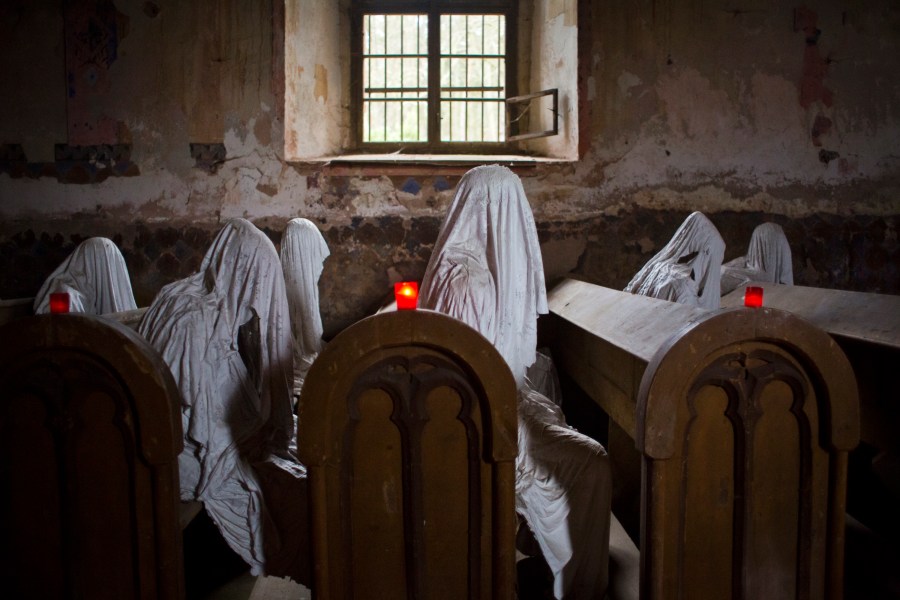
Some abandoned places will scare the living daylights out of you, while other deserted sites will take your breath away. Either way, you might be tempted to explore these must-see destinations yourself.
From floating forests and restricted cities to a scary doll island, these are the 30 most unbelievable abandoned places. Keep reading to learn the fascinating (and sometimes tragic) stories of these once-thriving sites.
Kolmanskop, Namibia
Located in southern Africa’s Namib Desert, Kolmanskop was once a small community of German settlers seeking wealth. In 1908, settlers discovered that the area was rich in diamonds, so they mined the fields until there were no diamonds left. As the diamonds disappeared, so did the settlers.
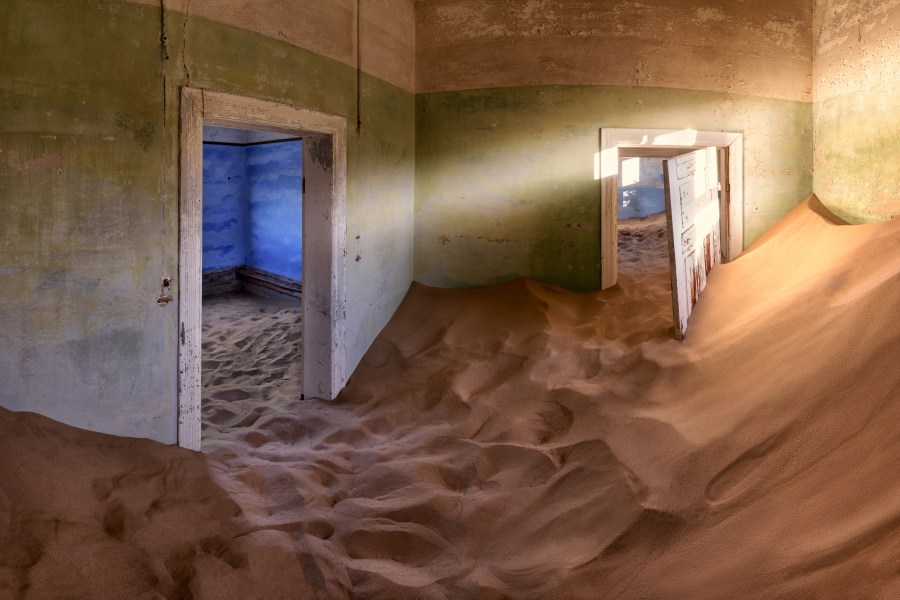
By 1956, Kolmanskop was completely deserted. Only haunted houses that are knee-deep in sand remain in the abandoned town. Today, Kolmanskop is a popular filming location for movies and TV shows. The paranormal documentary TV show, Destination Truth, featured Kolmanskop due to claims that ghosts haunt the area.
Floating Forest – Sydney, Australia
A haunting, yet beautiful floating forest rests in Homebush Bay, Australia. The forest is actually the remains of the SS Ayrfield, a large steamship that was decommissioned after World War II. How is the SS Ayrfield still floating? The answer remains unknown.
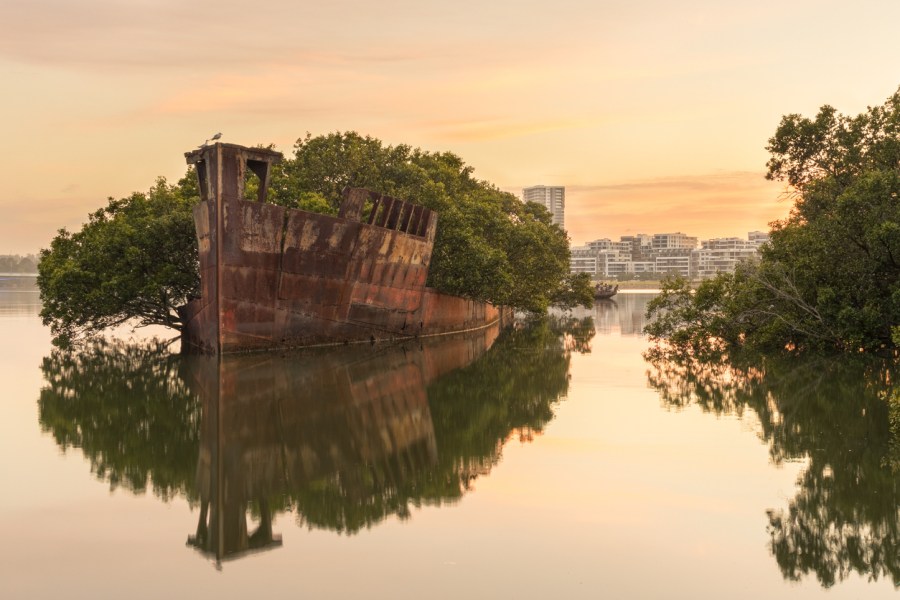
Originally built in 1911, the SS Ayrfield was an active ship when Homebush Bay was a busy hub for transporting coal, oil and war supplies. Now, multiple decommissioned ships remain in the bay. The floating ships rust, while mangrove trees and shrubs grow inside their hulls.
The Maunsell Sea Forts – England
Located close to the Thames and Mersey rivers in Britain, the Maunsell Sea Forts were once armed towers. During World War II, the towers helped defend against possible German air and ship raids. The forts were retired in the late 1950s. Several new residents have since occupied the towers, including pirate radio operators and the Principality of Sealand, which claims to be an independent nation.
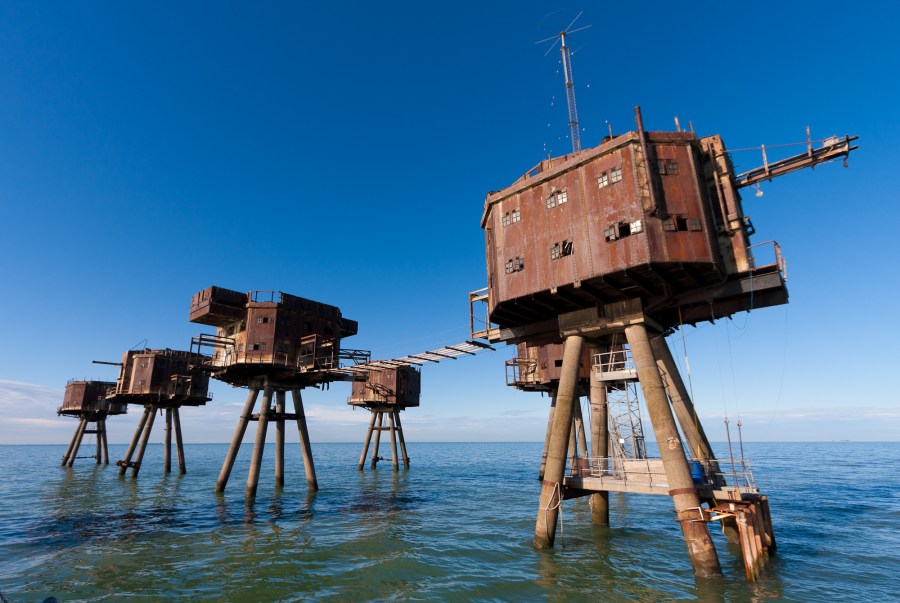
The Maunsell Sea Forts have also caused several tragic accidents since being retired. In 1963, during a heavy fog, a ship crashed into one of the towers. The deadly incident claimed four lives and destroyed the tower. Only a small portion of the tower survived. Today, the majority of the towers are abandoned.
Chernobyl Exclusion Zone – Pripyat, Ukraine
Instagrammers and photographers can’t stay away from the Chernobyl Exclusion Zone, a hazardous area of 1,000 square miles. Although authorities restrict access to the Exclusion Zone to prevent the spread of radiological contamination, HBO’s hit TV show, Chernobyl, has attracted tourists to the area.
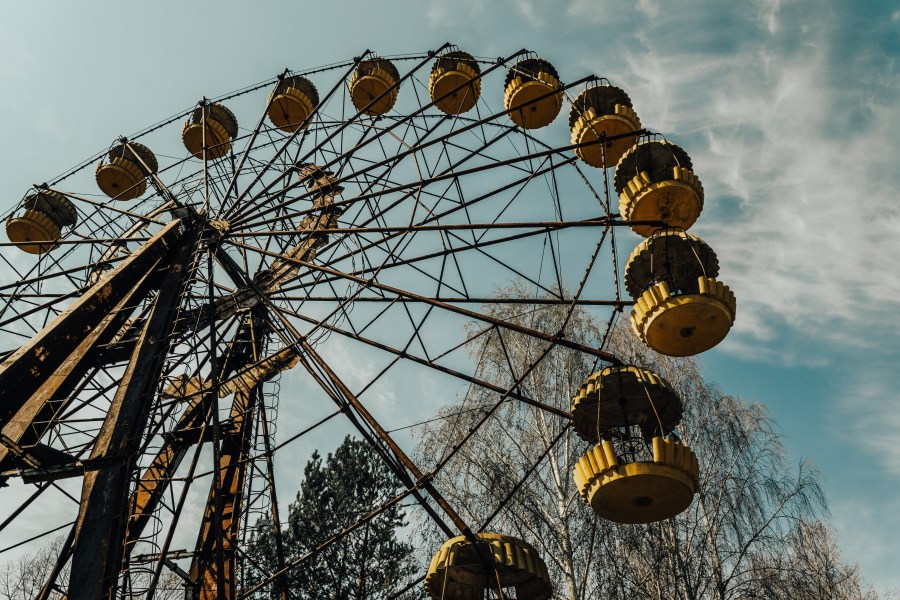
In 1986, the Chernobyl Nuclear Power Plant exploded, contaminating the air with deadly levels of radiation. The disaster that unfolded over the next few days is now known as the worst nuclear power plant accident in history. Approximately 116,000 residents evacuated to escape radiation exposure. Today, Pripyat is a radioactive ghost town. The only way to visit is by booking a guided tour.
City Hall Subway Station – New York, NY
This subway station is a silent jaw-dropping metro terminal underneath noisy City Hall in New York City. Entering the station is like being transported back to 1904, when the station first opened. The skylights, colored glass tilework, beautifully framed arches and brass chandeliers perfectly capture early 1900s interior design.
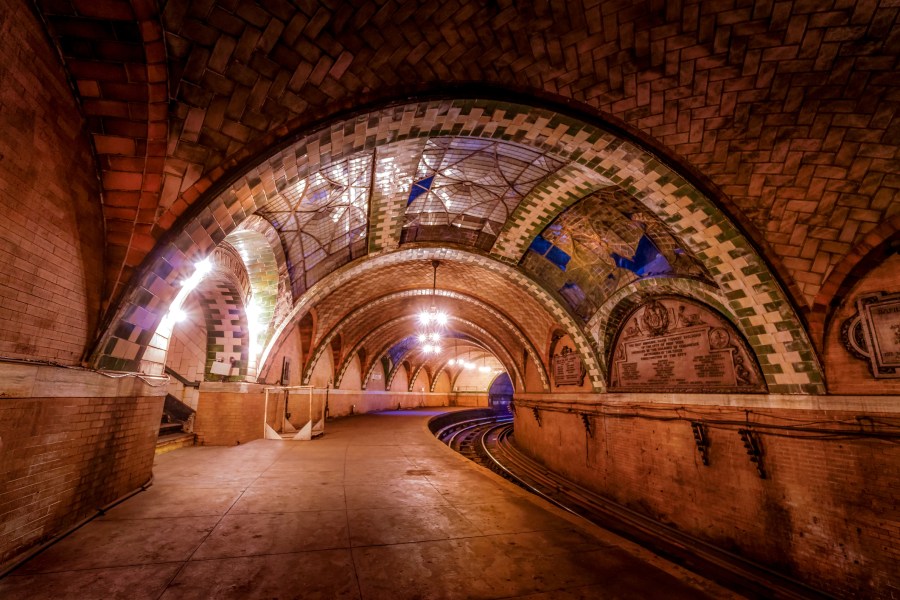
City Hall Subway Station is only suitable for five-car trains. Its curved layout became too dangerous for the newer, longer trains developed by the city in the early 1940s. After the subway created more modern trains, the station shut down in 1945. Now, the City Hall Subway Station stays closed to the public due to security problems, except for the rare exclusive tour.
Battleship Island – Hashima Island, Japan
Hashima Island has many names, such as Battleship Island (for its shape) and Ghost Island (for its spookiness). The Japanese island has a dark and tragic past. From the 1800s to the late 1900s, mine workers populated Hashima Island and were forced to retrieve underwater coal for the war effort. These mine workers labored under dangerous conditions and endured cruel treatment.
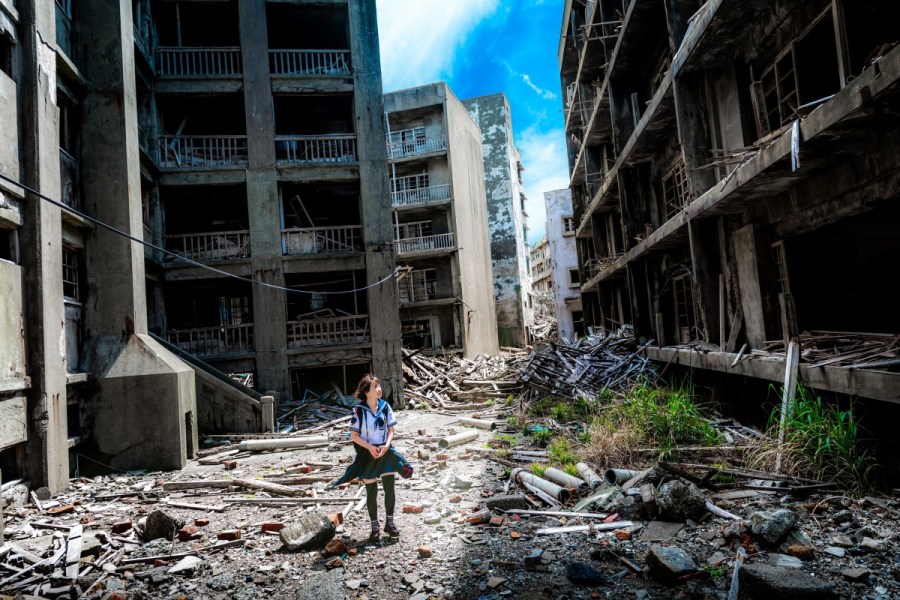
Many workers died due to accidents, exhaustion and malnutrition. After Japan dumped coal for petroleum, everything on Hashima Island closed down in 1974. It’s now a ghostly concrete island, where cracked apartment complexes deteriorate and rubble fills the streets.
Teufelsberg – Berlin, Germany
In Berlin, Germany, sits an abandoned Cold War listening station. The station lays on top of Devil’s Mountain, a 262-foot hill made of World War II wreckage. In the 1950s, the NSA built the station to spy on communist East Berlin. This sounds like a story right out of a movie.

After the fall of the Berlin Wall in 1989, the NSA deserted the listening station. Now, the station resembles graffiti-covered cracked shells that tower over Berlin. The station remains abandoned because it’s illegal to visit the towers. Only wild boars and daring tourists roam the bottom of Devil’s Mountain.
Rubjerg Knude Lighthouse – Denmark
Getting buried in sand at the beach is fun unless you’re the Rubjerg Knude Lighthouse. Located on the North Sea coast of Denmark, the lighthouse has been neglected for over a decade. Not only is the lighthouse abandoned, but it has also been swallowed by the surrounding sand. Yikes!
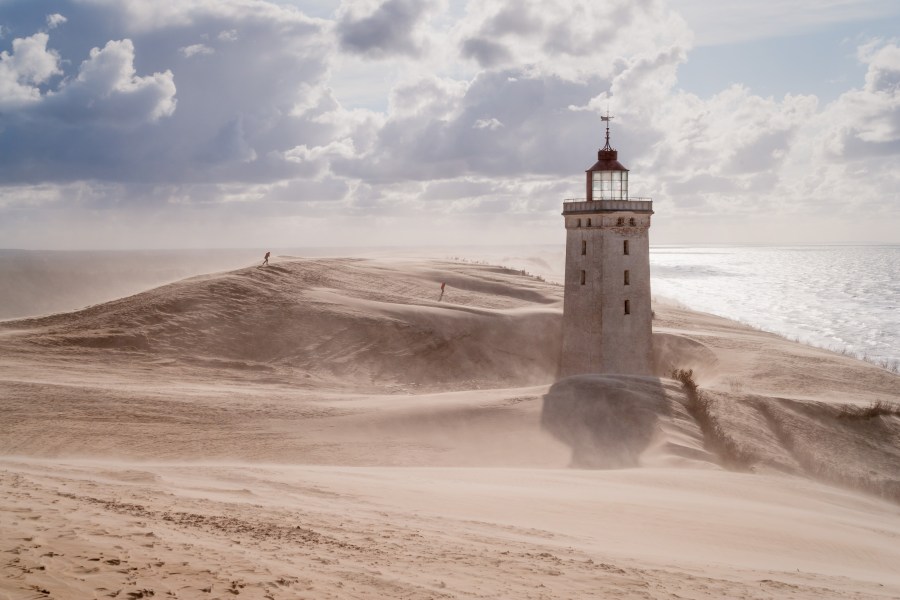
Rubjerg Knude Lighthouse was first lit in 1900, and successfully operated until 1968. It served as a museum and coffee shop, but was forced to shut down due to the rising sands in 2002. Over time pressure from the sand has heavily damaged the structure. Unfortunately, the lighthouse is expected to meet its doom within the next 2 to 5 years by sinking into the ocean.
Tianducheng – Hangzhou, China
The Eiffel tower. French-style architecture. Wide streets. Beautiful fountains and buildings. We’re not talking about Paris. We’re actually describing its twin city in China. Believe it or not, a miniature replica of the city of romance sits in China’s Tianducheng district.
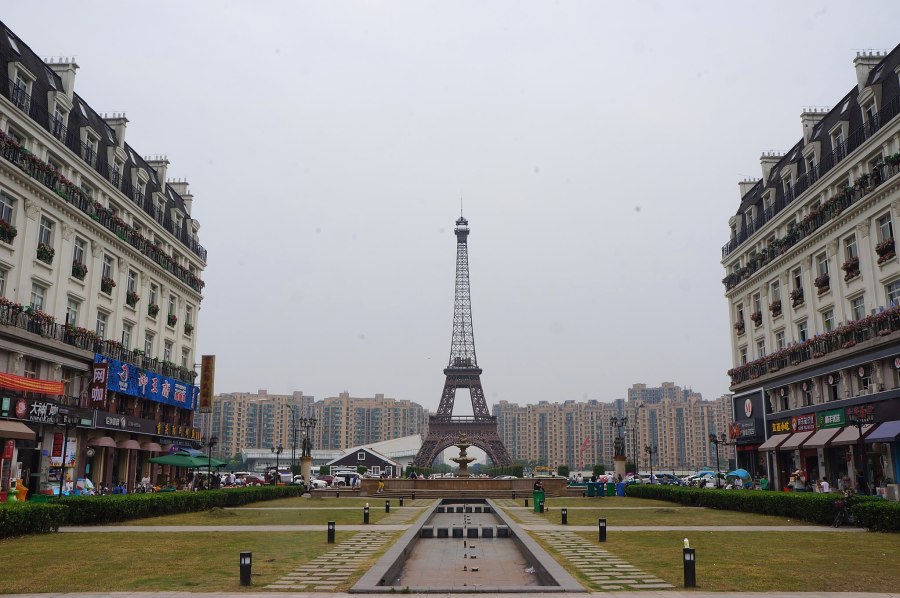
Built in 2007, Tianducheng includes a Champs-Elysées (a famous avenue in Paris) and a 300-foot tall Eiffel Tower. Tianducheng is a recreated Paris with a twist: It comes with Chinese stores. Many visitors call the phantom town creepy, yet impressive. The streets are often empty, except for some bridal parties and newlyweds who want to take pictures in front of the tower.
St. George’s Church – Luková, Czech Republic
Kostel Svatého Jiří, also known as St. George’s Church, has had an unbelievable amount of bad luck. Built in 1352, the church was almost destroyed by fires countless times. But that didn’t deter the congregation. In 1968, parts of the roof fell in during a funeral service.
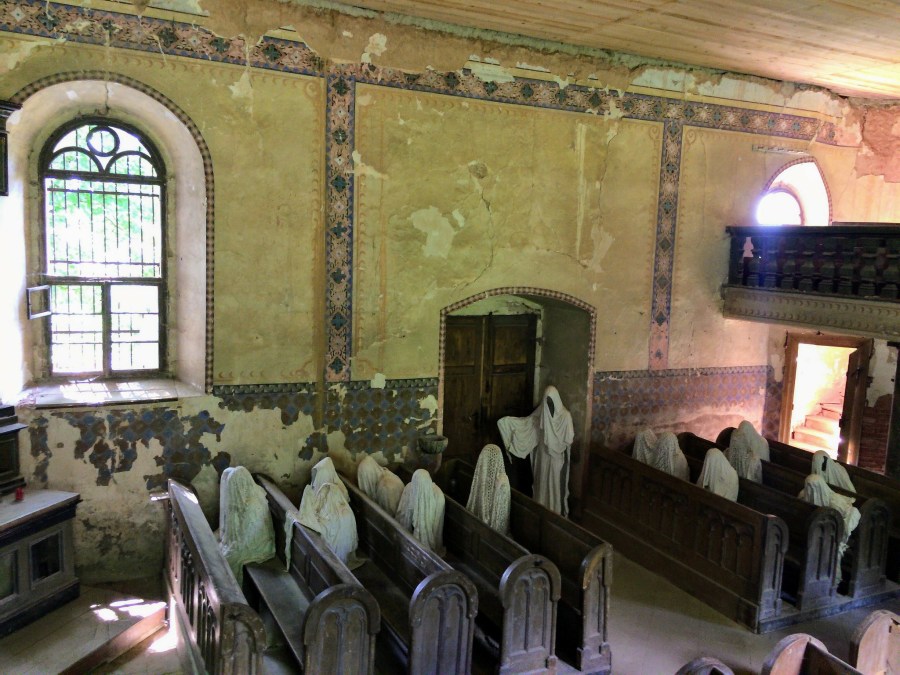
Believing that the church was haunted, the congregation left and never returned. The building fell victim to vandals and thieves until 2012, when an art student came up with a plan to bring St. George’s Church back to life: Install 30 ghost sculptures. The idea worked. Today, tourists call the building the “Ghost Church,” snapping pictures and praying next to the spooky figures.
Craco, Italy
The hilltop town of Craco just couldn’t catch a break. Founded in the 8th Century, Craco fell victim to the Black Plague, earthquakes, landslides and floods. Sounds terrible, right? After another earthquake in 1980, residents called it quits and left the city.
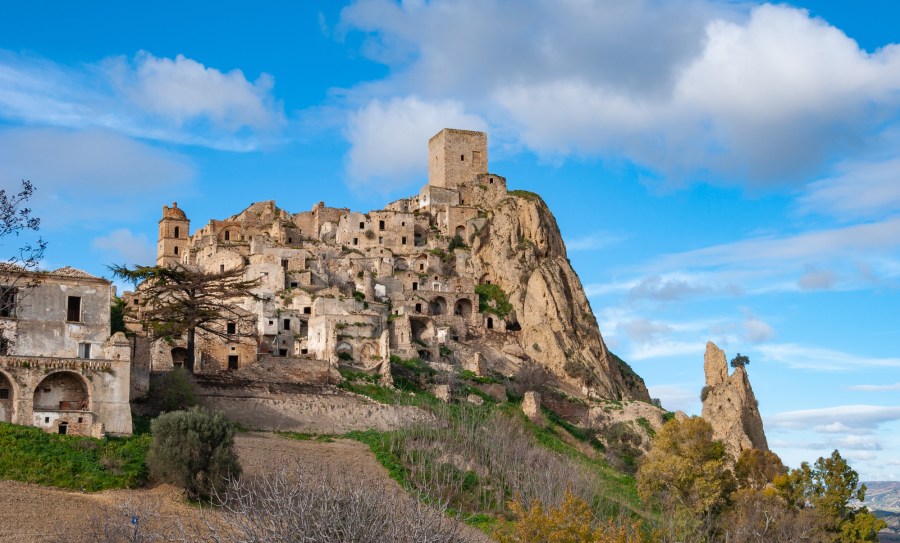
Today, Craco slowly crumbles and decays, but it’s also a tourist attraction for visitors and filmmakers. It appeared in the suicide of Judas scene in Mel Gibson’s film The Passion of the Christ. Craco even hosts religious festivals in the summer, but for the majority of the year, the town remains abandoned.
The Island of the Dolls – Xochimilco, Mexico
Xochimilco is more than just a World Heritage site; it’s also famous thanks to Isla de las Munecas (the Island of the Dolls). If the spiders falling on your face won’t scare you, these creepy dolls may do the job. Tucked between Xochimilco’s canals, the area is known for the hundreds of dolls (and doll parts) dangling from trees and nailed to buildings.
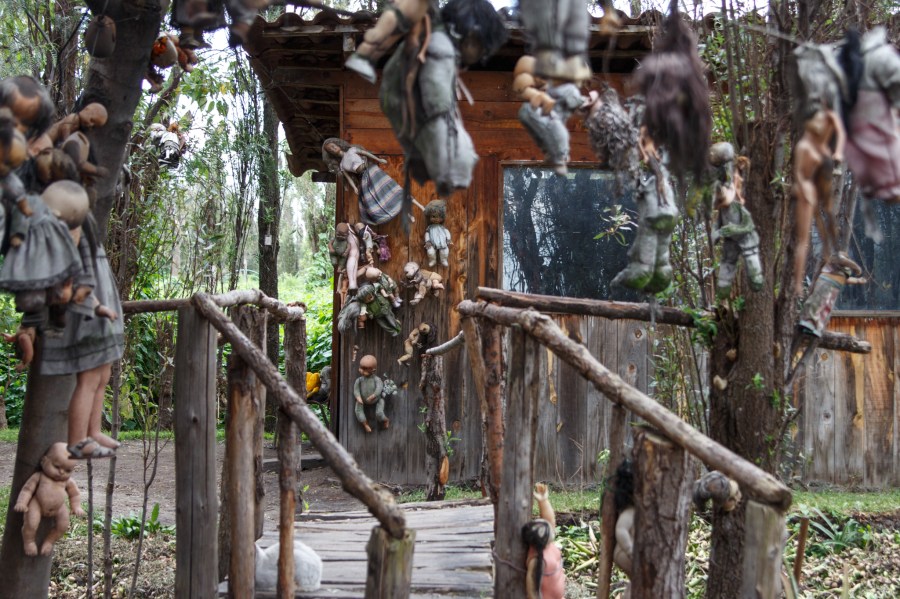
It all started when the island’s previous resident, Don Julian Santa Barrera, found a girl’s body in a canal sometime in the 1950s. Shortly after, Barrera became obsessed with hanging dolls all over the island to chase off evil, including the drowned girl’s spirit. Brave guests visit the Island of the Dolls by boat, but some superstitious locals refuse to go there.
Dallol, Ethiopia
It’s no surprise that the hottest place on earth is uninhabited. Dallol’s average temperature is 94°F. With a hot temperature like that, who would want to live there? Believe it or not, people actually inhabited this scorching area once. From the 1900s to the 1960s, Italian and U.S. companies mined in Dallol.
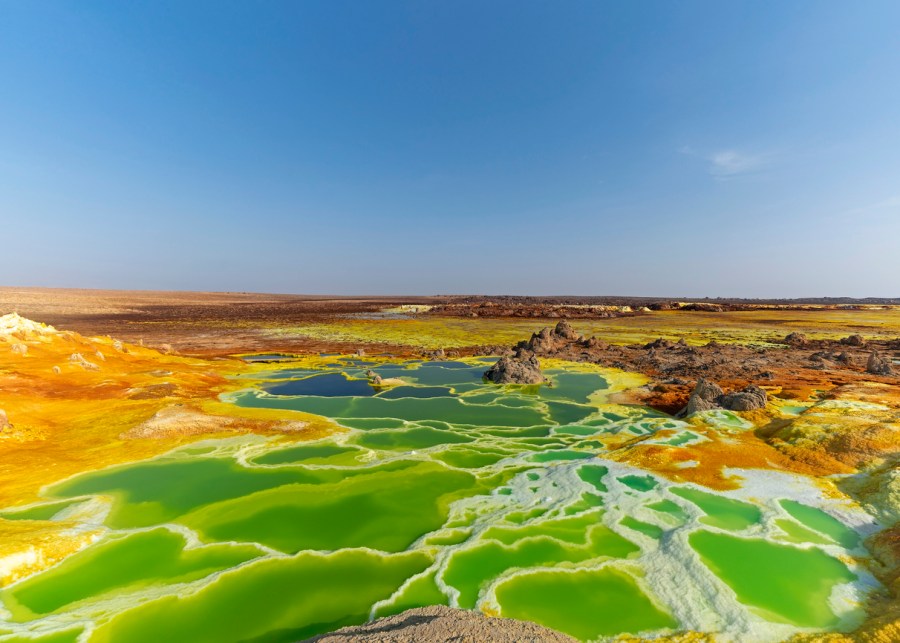
Now, people describe Dallol as a ghost town with active volcanic zones. It’s one of the most remote places on Earth, but salt collectors still visit once in a while. Besides using jeeps to reach Dallol, visitors use camel caravans to travel to the area.
Pompeii – Campania, Italy
Pompeii wasn’t deserted because everyone picked up their belongings and left. In A.D. 79, the bustling city was left empty after an earthquake and a powerful volcanic eruption occurred. After Mount Vesuvius erupted,13 to 20 feet of volcanic ash and pumice covered the city. The thick volcanic ash also buried residents who couldn’t flee, killing at least 2,000 people.
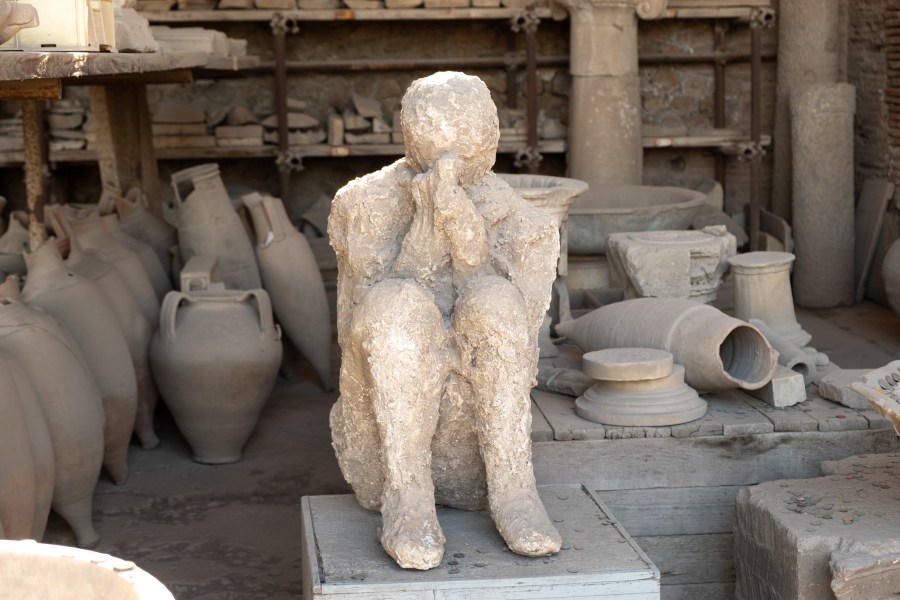
The ash encased victims, leaving their bodies frozen where they perished. Pompeii is now a UNESCO World Heritage Site with 2.5 million visitors each year. In 2018, researchers found a person crushed by a boulder, a child trying to take cover, and an ancient Roman horse frozen in the ashes.
Belchite, Spain
Locals claim to hear ghosts screaming and crying in Belchite, a town left in ruins. Belchite still stands as a reminder of the deadly Spanish Civil War, which took place between 1936 and 1939. The air stunk of rotting bodies. The ground was covered in so much rubble that no one could find the streets.
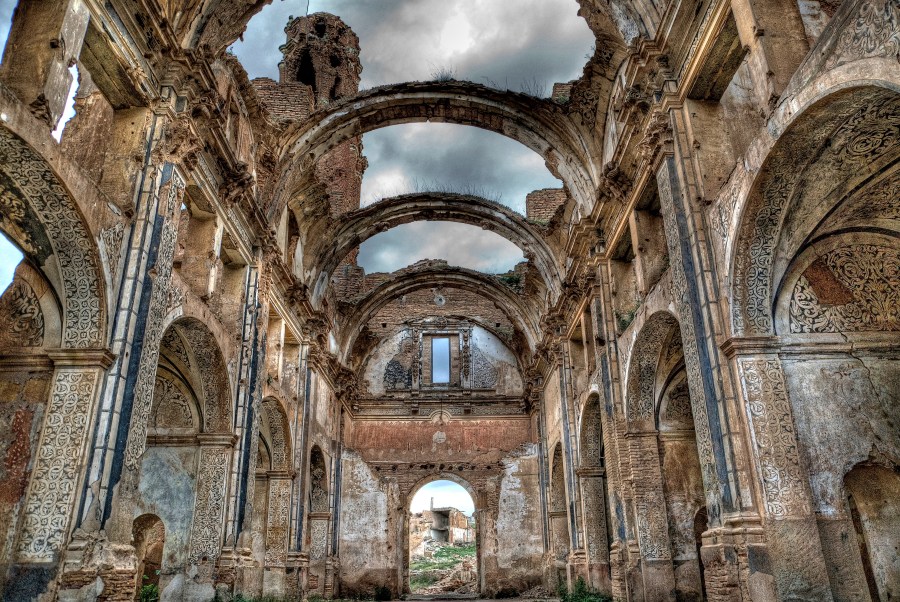
Belchite is now a popular filming location, appearing in Terry Gilliam’s 1988 film The Adventures of Baron Munchausen and Guillermo del Toro’s Pan’s Labyrinth. The ghost town was also in the opening scene of the 1983 ITV documentary, The Spanish Civil War.
Potosí, Venezuela
In 1985, the Venezuelan government deliberately flooded the town of Potosí to create a hydroelectric dam, forcing 1,200 residents to evacuate. The cross from the church’s steeple was the only visible remnant of the drowned town. For 26 years, Potosí remained underwater.
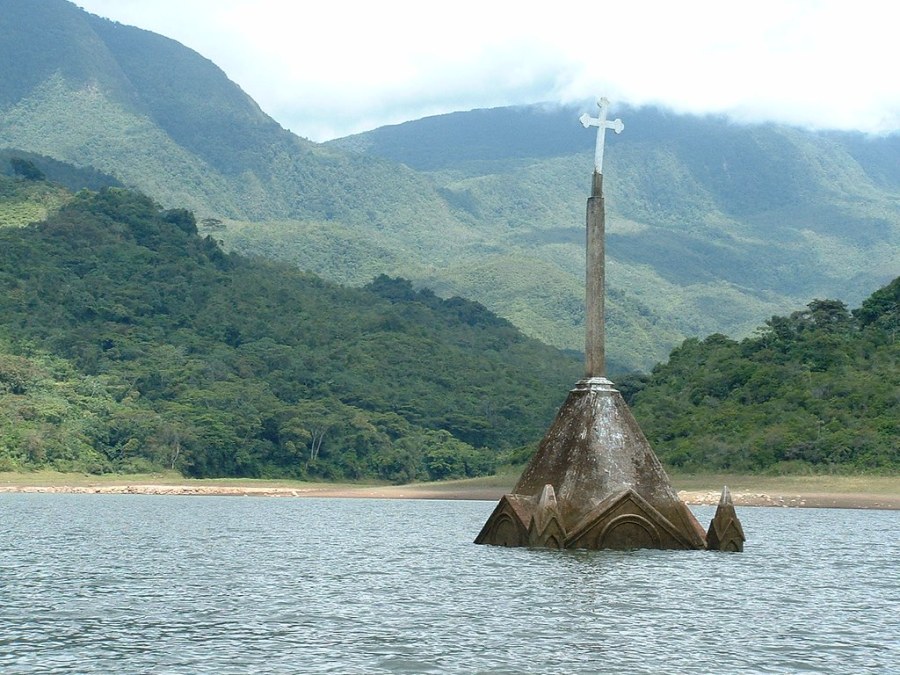
By 2010, the reservoir’s water level dropped 98 feet due to a severe drought linked to El Niño. The dry spell uncovered the skeletons of the church, grave markers and houses. Past residents also returned to visit, such as Josefa Garcia, who once worked at the church. Garcia noted that she felt sad walking through the ruins and seeing the damage.
Bodie, CA
Bodie went from Wild West boomtown to ghost town in a few short years. It used to be a popular Gold Rush destination with a population of 10,000 people. In 1915, discouraged settlers abandoned Bodie after the decline of gold. For more than 150 years, Bodie has been left untouched, including the 100 deserted buildings and everything inside them.
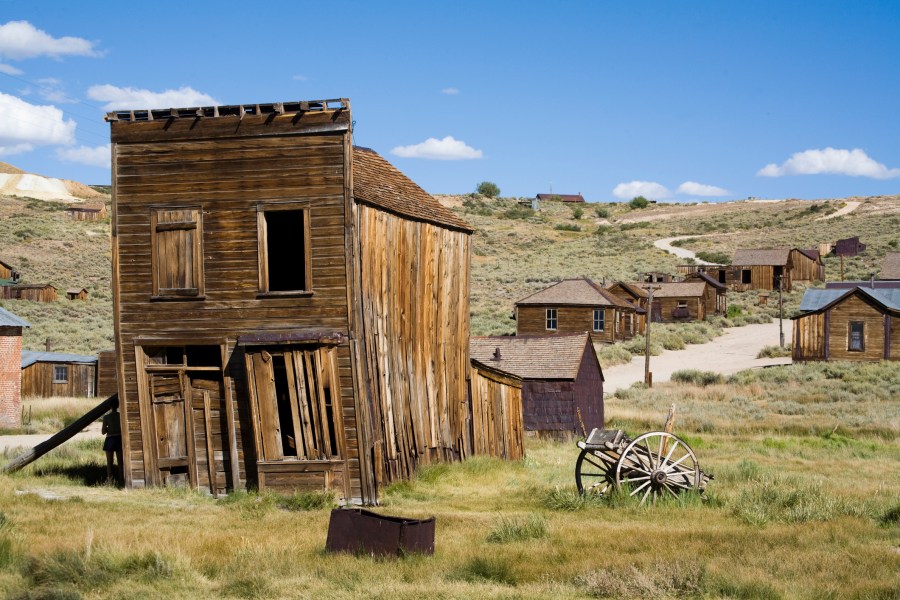
Homes still have the tables set, while shops and restaurants are stocked up with supplies. Now, Bodie is preserved in a state of arrested decay and reportedly haunted by a spirit. As the legend goes, anyone who leaves with a piece of Bodie (even a rock) will be cursed. The misfortunes may include bad luck, health problems and mysterious accidents. It’s probably best for anyone to avoid that risk.
Oradour-sur-Glane, France
During World War II, one of the worst massacres against French citizens took place in Oradour-sur-Glane. In 1944, Nazi military forces brutally murdered 642 residents, including women and children. The Nazi soldiers looted and burned the village, including the church and barns.
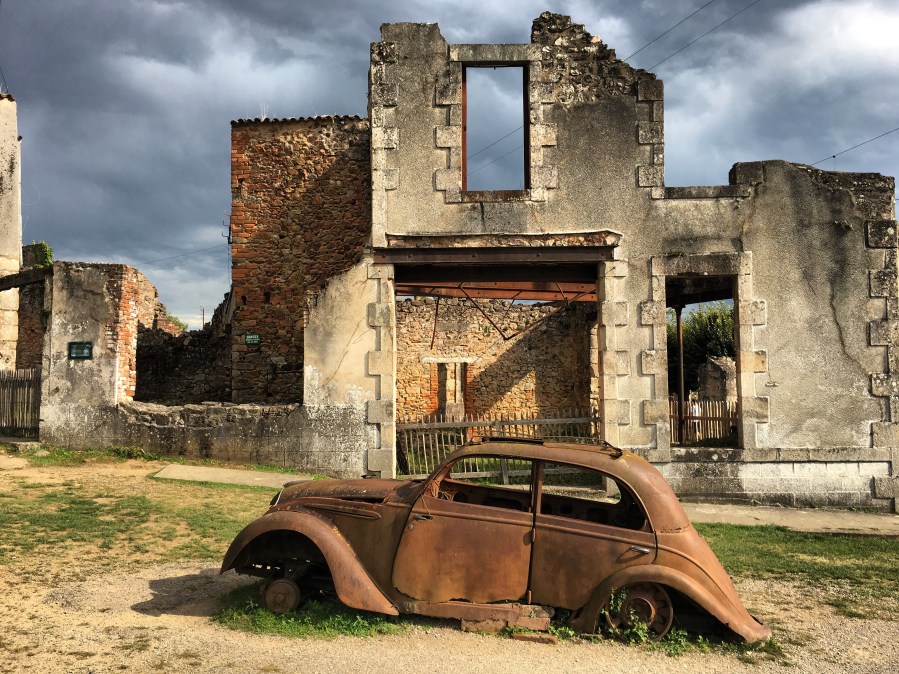
Charles de Gaulle, the French president, ordered to build a new Oradour-sur-Glane closeby after the war ended. The original site was left as a permanent memorial and museum. The museum exhibits many personal items, including watches that stopped at the time their owners were killed. The ruins show scattered cars covered in rust and charred buildings. It’s a constant reminder of the cruel acts committed by Nazi soldiers.
Machu Picchu – Cusco Region, Peru
Many globetrotters know that Machu Picchu is a famous Inca monument, but some people don’t realize that it’s actually an abandoned civilization. Why was it deserted in the first place? Historians believe that the inhabitants left during the Spanish conquests or died from smallpox in 1572.
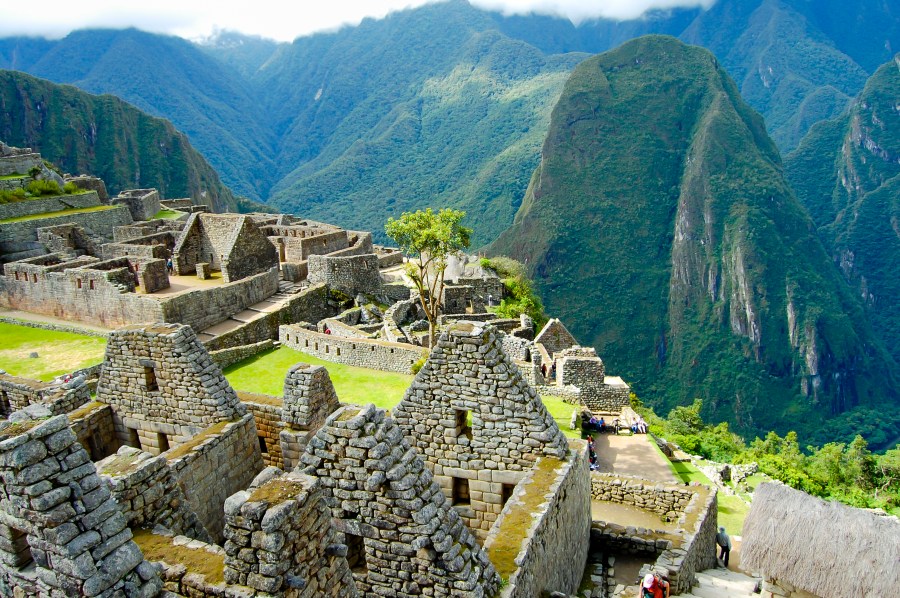
Machu Picchu was left undisturbed for centuries. Save locals, no one really knew about Machu Picchu until the early 1900s. The hidden site gained international attention after Yale University professor, Hiram Bingham, told the outside world about Machu Picchu in 1911. Today, plants have grown over many structures, including baths, homes, temples and sanctuaries.
Plymouth, Montserrat
Located on the Caribbean island of Montserrat, Plymouth was destroyed by the Soufrière Hills volcano. Fearing for their lives, residents evacuated while the volcano continued to erupt in 1995. The tragic event claimed at least 19 lives. Plymouth was officially abandoned in 1997, shutting down all businesses, including the W. H. Bramble Airport.
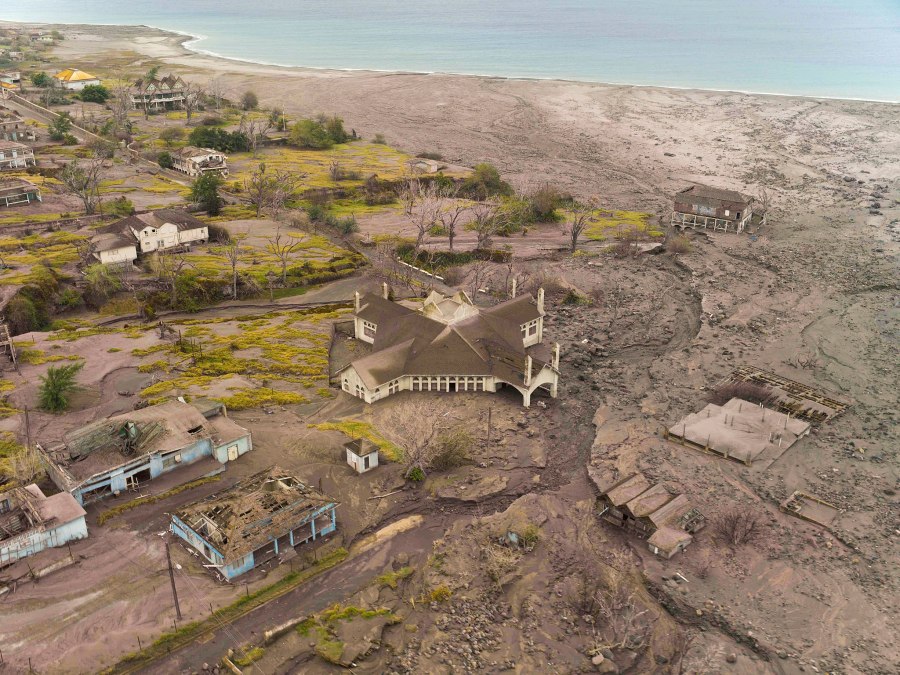
Tons of deadly volcanic debris burnt and consumed the town, while the smell of sulfur filled the air. Plymouth was a giant sight of gray tall buildings and rooftops covered in ash. Today, Plymouth is still declared an exclusion zone.
Centralia, PA
Have you ever heard of Silent Hill, the terrifying video game and movie? Believe it or not, Silent Hill was based on the real town of Centralia, Pennsylvania. In 1980, almost 1,000 people lived in Centralia. By 2013, only seven residents remained due to the coal mine fire that has been burning below the town since 1962. The fire is expected to burn for 250 years.
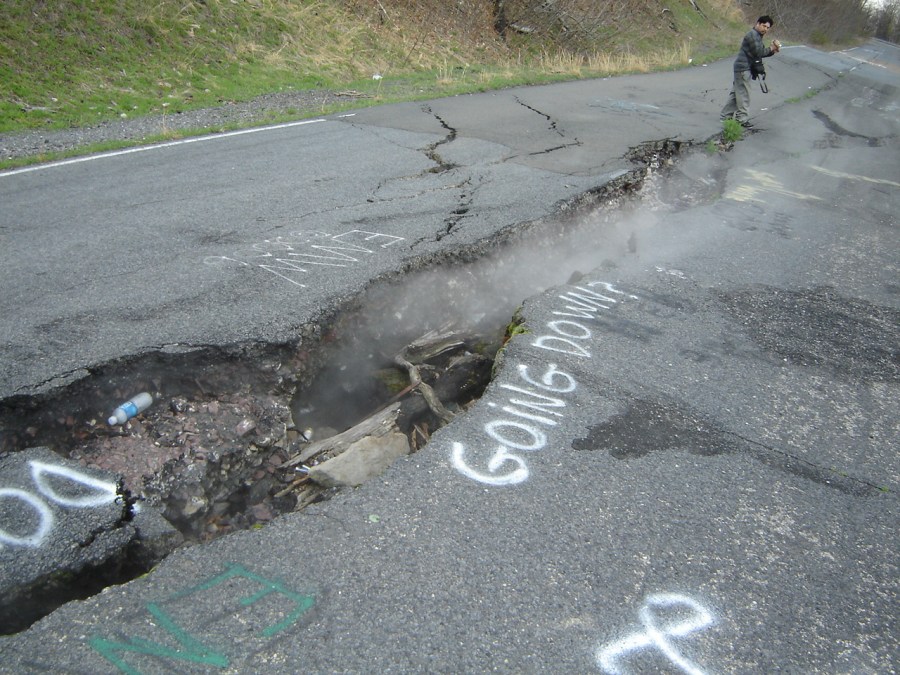
Centralia residents began noticing something strange was going on after a gas-station owner discovered the gasoline in his tank was 172 °F. The entire state learned about the underground inferno after the street suddenly collapsed and a 12-year-old boy fell into a sinkhole. The hole released hot steam and contained a toxic level of carbon monoxide. Now, dangerous fumes spread in the air, making the town uninhabitable.
Rhyolite, NV
About 120 miles northwest of Las Vegas lays the bizarre ghost town of Rhyolite, Nevada. Rhyolite, a former gold mining hub, thrived with a hospital, an opera house and a stock exchange. Charles M. Schwab invested in the town and purchased one of the mines too.
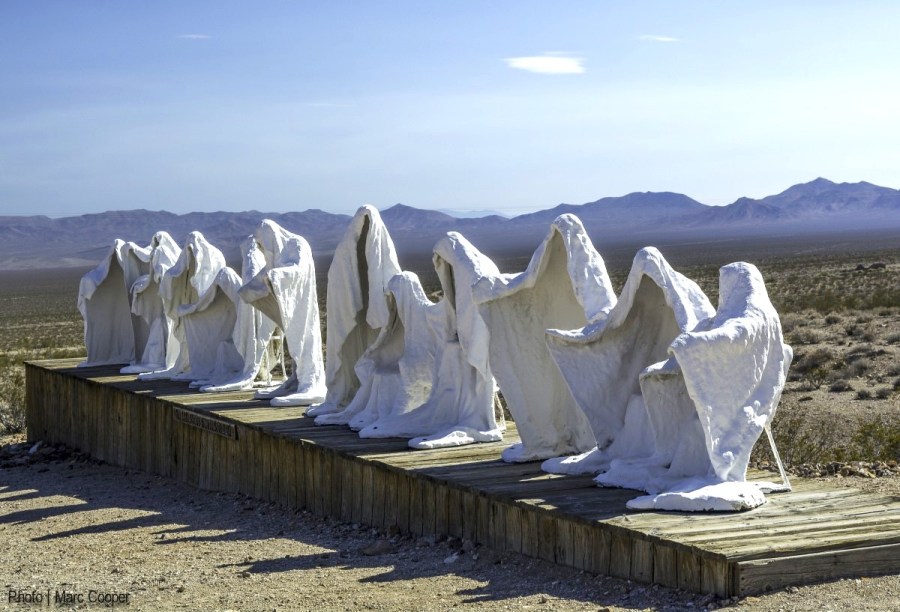
However, the town faced plenty of trouble, including a financial crisis, natural disasters and the loss of funding. By 1920, all of the residents had deserted Rhyolite. The abandoned town now features buildings in disrepair and creepy art displays. Ghostly figures portray the painting, The Last Supper, while another ghost holds a bike up. Another strange work of art includes a sculpture of a giant pixelated woman.
Varosha, Cyprus
In the 1970s, Varosha, Cyprus was a paradise for millionaires. Varosha boasted a successful tourism economy with luxurious beachfront hotels, attracting famous visitors such as Elizabeth Taylor and Brigitte Bardot. However, everything changed in an instant in 1974.
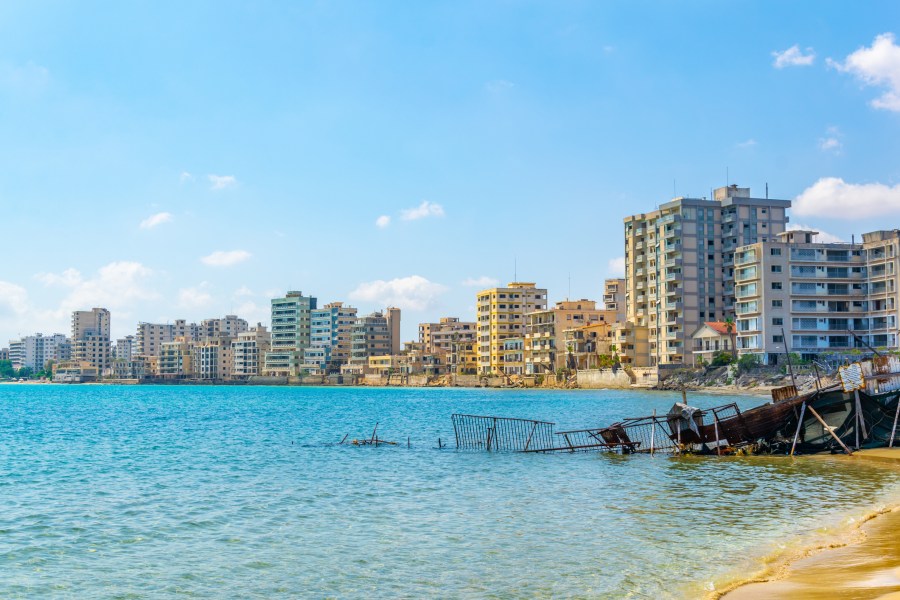
When Turkey invaded Cyprus, 15,000 residents escaped Varosha. The residents left their belongings behind and never returned. Today, political strife still persists, while the town rots away. Highly secured behind a barrier, Varosha is forbidden to enter. Trees grow through buildings, piercing through floors and roofs. Clothes are still displayed in shop windows, while cars sit at dealerships.
Villa Epecuén, Argentina
The flooded abandoned town of Villa Epecuén is now filled with pale rubble and thin trees. Villa Epecuén was once a hot tourist spot, known for the healing salt waters of Lago Epecuén. Built in the 1920s, Villa Epecuén received an average of 5,000 visitors each year.
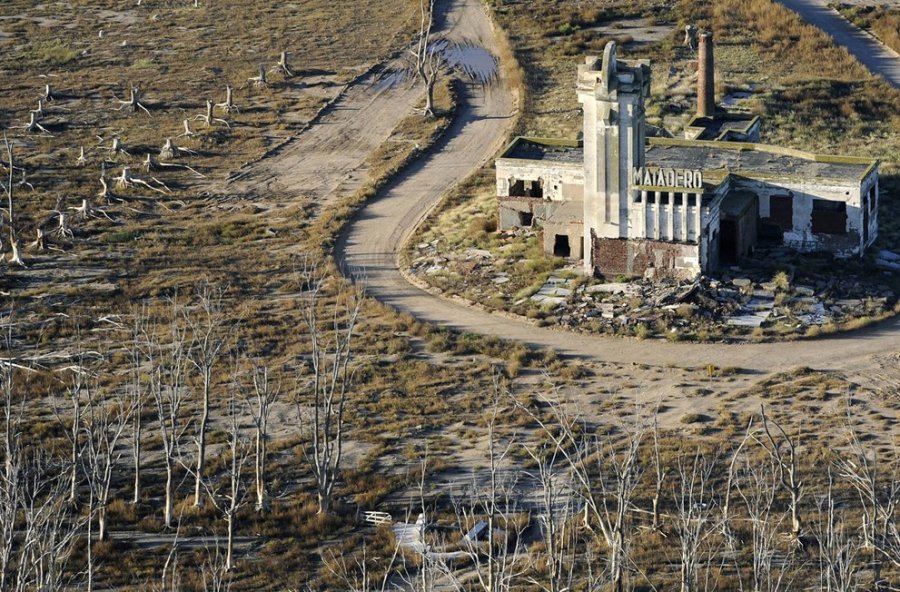
Disaster struck in 1985. The scene was straight out of a horror movie. Powerful rains broke a dam and the water swallowed hundreds of businesses and the town. For 25 years, Villa Epecuén remained underwater. When the water receded, it uncovered gray skeletons of trees, cars and buildings. Today, the ghost town’s appearance is spine-chilling.
Holland Island – Chesapeake Bay, MD
In the 1600s, watermen and farmers used to live on Holland Island. However, the wind and tide gradually destroyed many buildings, including homes and stores. Residents tried to stop the erosion by building stone walls, but they failed. The town’s attempts were no match for the forces of nature.
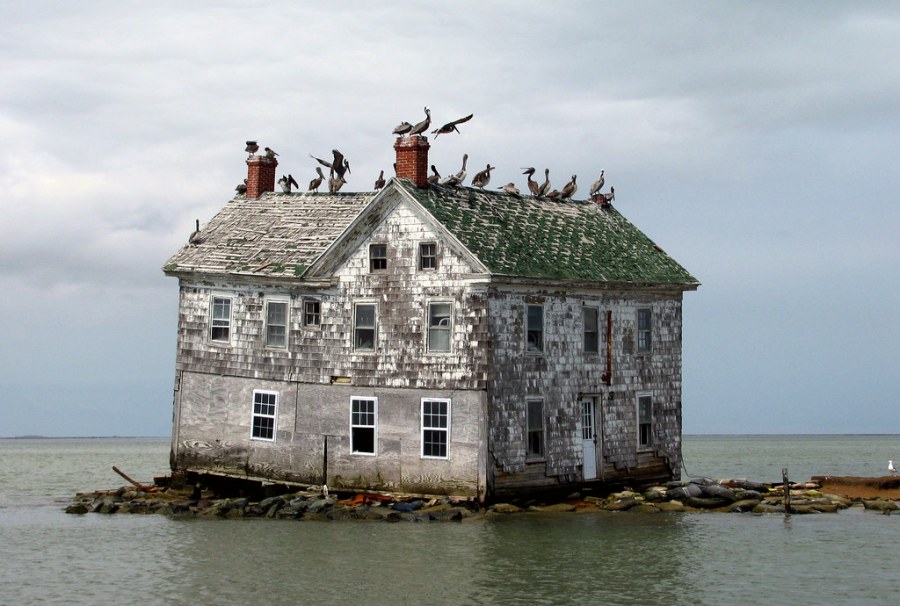
Many residents gave up and moved to the mainland, leaving the submerging island behind. In 1918, the last family left Holland Island when a tropical storm destroyed the church. The island’s final house cracked and fell into the bay in October 2010.
The Valley of the Mills – Sorrento, Italy
In the deep canyons of Sorrento, Italy, deserted old mills are left to waste away. “The Valley of the Mills” was once powered by water. The mills functioned as flour production companies in the 900s, contributing to Italy’s food industry. Due to a rise in humidity and the treacherous terrain surrounding the mills, they were abandoned in 1866.
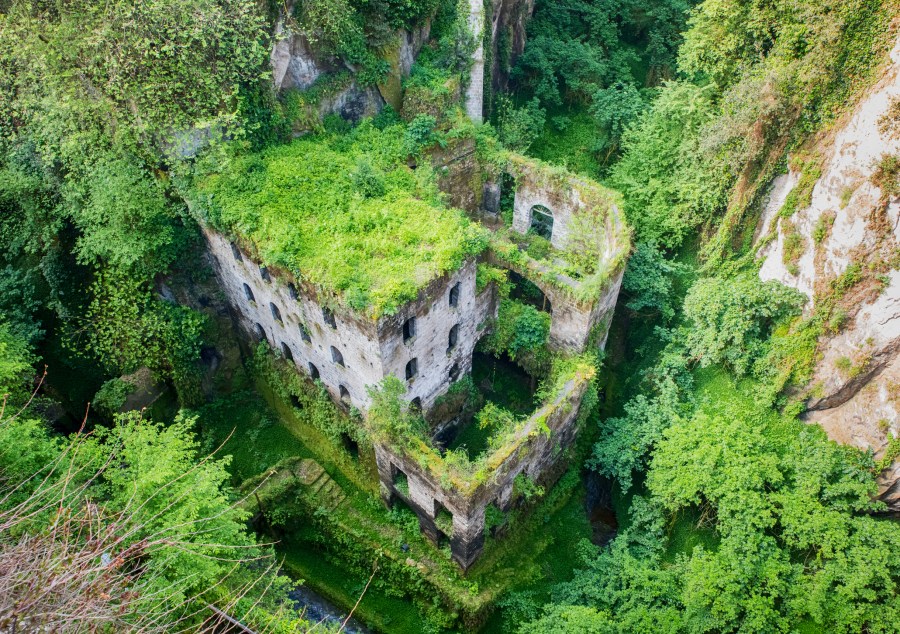
Surrounded by plant life, the mills are popular tourist attractions for travelers and hikers to peer down. Mill seekers enjoy the gorgeous, yet haunting sight of nature and building ruins. Bushes cover the roofs and walls, spilling through the windows and cracks. No one is allowed to step into the ravines or mills, but that doesn’t stop thrill-seekers.
Beelitz Heilstätten Hospital – Germany
This horrifying, neglected military hospital definitely lives up to its creepy vibe. Built in 1898, Beelitz Heilstätten Hospital treated people with fatal conditions, like lung disease and tuberculosis. A young Adolf Hitler also sought treatment at this spooky health center.
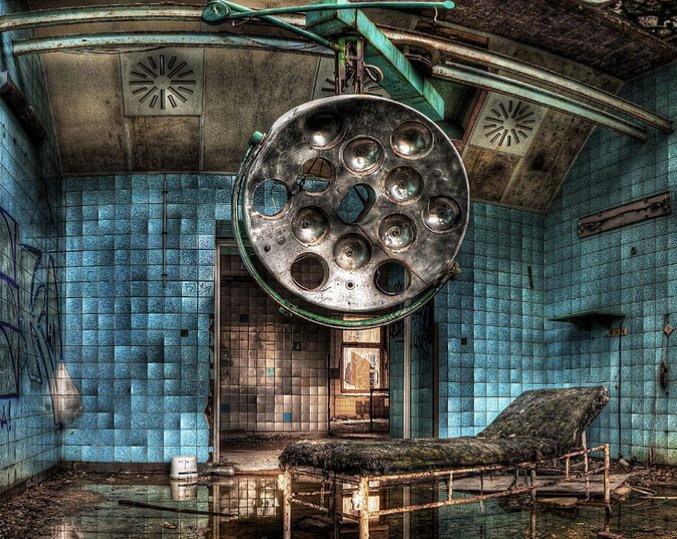
During World War I, Beelitz Heilstätten Hospital treated victims hit by machine guns or mustard gas. Many soldiers required medical care here, including Hitler, who was hurt in a British gas attack and sustained a leg injury. The majority of the hospital has been abandoned since the 1990s, including the surgery ward and the psychiatric ward. The surrounding forest consumes the complex, while the walls flake and the stairs crust.
Mirny Diamond Mine – Eastern Siberia, Russia
Mirny Diamond Mine, the world’s second largest man-made hole, is over 1,722 feet deep and 3,900 feet wide. Joseph Stalin, the dictator of the Soviet Union, ordered the construction of the diamond mine in the 1940s. The mine remained a hot spot for diamonds between 1957 and 2001, requiring lots of effort in treacherous climate conditions.
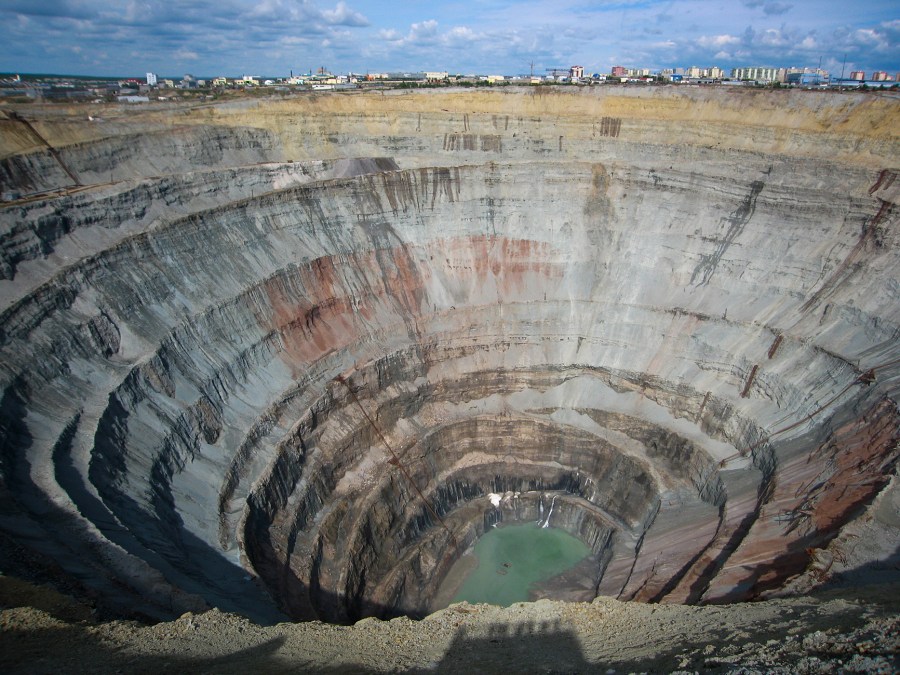
Mirny Diamond Mine has been flooded, frozen and turned into mush. Each winter, the ground remained frozen for seven months, making mine work extremely difficult. In the summer, the ground became a muddy mess. Miners abandoned Mirny Diamond Mine in 2004 because digging deeper became too difficult. It was recommissioned in 2009, but further information on the mine remains unknown.
Eastern State Penitentiary – Philadelphia, PA
Notorious criminals, like “Slick Willie” Sutton and “Scarface” Al Capone lived inside the walls of the Eastern State Penitentiary. Built in 1829, the prison took complete isolation to new extremes. Prisoners stayed in their own private cells. They also exercised alone and ate their meals alone. Interacting with other prisoners or guards was forbidden.
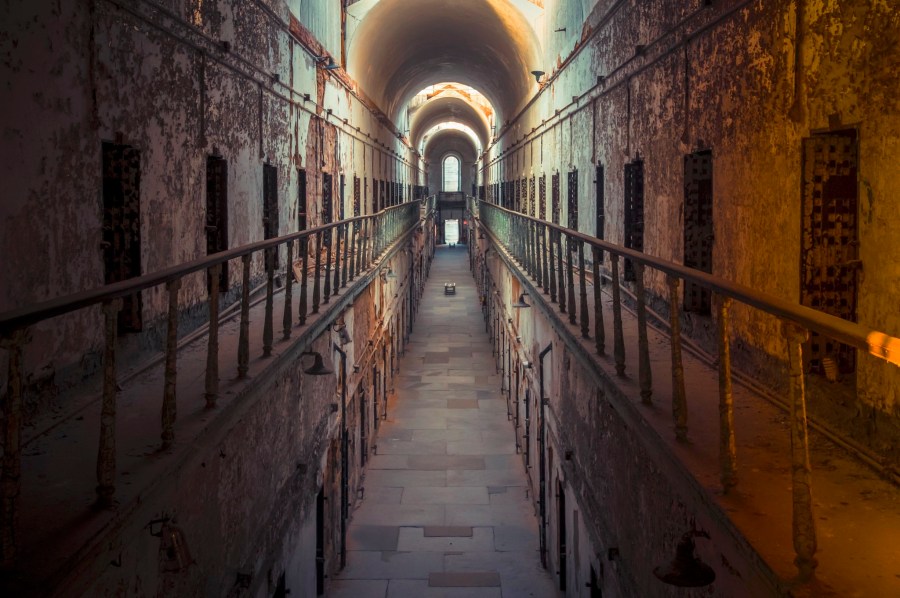
It doesn’t stop there. Guards covered inmates’ heads with hoods so they couldn’t see each other whenever they left their cells. Due to overcrowding, Eastern State Penitentiary stopped its solitary system in 1913. The prison shut down in 1971, remaining empty until 1994 when guests began to attend ghost tours there.
Ayutthaya Historical Park – Thailand
Before Bangkok was even founded, the flourishing capital of Thailand was Ayutthaya. King Ramathibodi I founded the old city of Ayutthaya in 1351. The Burmese Army burned and destroyed the city in 1767, leaving Ayutthaya in ruins. During its existence, 35 kings claimed the throne in the Ayutthaya kingdom.
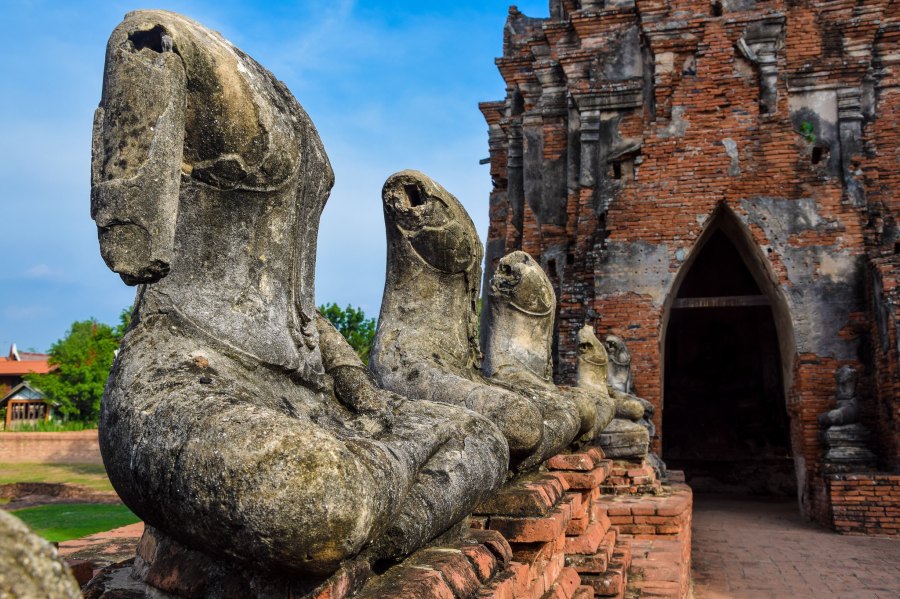
In 1969, the Fine Arts Department renovated the ruins. After becoming a historical park in 1976, improvements got bigger and better. Today, Ayutthaya features stunning Thai buildings and art, such as temples, prangs, chedis and statues. One notable remnant is the Buddha head growing in the roots of a banyan tree.





